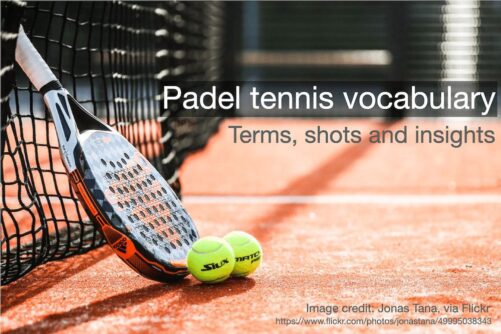The 2025 women’s professional padel season has delivered exceptional drama and compelling storylines as we reach the mid-point of the campaign. With the sport experiencing continued dramatic global growth, the battle for supremacy on the women’s tour has intensified, creating one of the most competitive seasons in recent memory.
Tournament Victories: The Championship Race
Through the first half of 2025, the championship battle has been dominated by two exceptional partnerships, with the pair of Gemma Triay (individually ranked #1) and the Argentine, Delfi Brea (#4), getting the better results and capturing the number 1 ranking after the Italy major. They dethroned, thus, Ari Sánchez (#2=) and Paula Josemaría (#2=). Triay/Brea’s remarkable run includes five tournament victories from eight finals appearances, capturing both Major championships contested so far. They’ve also beaten the Sanchez/Josemaria pairing three of the four encounters this season. Here were the results of the different tournaments in the 1H according to the level (and number of points available to win).
Major Tournament Winners (2025)
There were two majors in the first half, with two carbon copy results, but with different stories to each victory:
- Qatar Major (April): Triay/Brea defeated Sánchez/Josemaría 6-4, 6-4
- Italy Major (June): Triay/Brea defeated Sánchez/Josemaría 6-4, 6-4
The Qatar match (2h36) was a particularly intense affair as Sánchez/Josemaría took a 4-1 lead in both sets, only to lose the next five games in a row and drop both sets 6-4, both times! You can watch it here on YT (with Dutch commentary). Meanwhile, both sets in the Foro Italico final (1h51) also had their share of swings and balances (3 breaks per set). Yet, the consistency of these results cannot be overstated. In both Major finals, Triay and Brea systematically dismantled the world number ones, demonstrating tactical superiority and mental fortitude when it mattered most.
P1 Tournament Winners
- Riyadh P1 (February): Sánchez/Josemaría (Claudia Fernandez/Bea González withdrew from final)
- Miami P1 (March): Triay/Brea defeated Sánchez/Josemaría 2-6, 6-1, 6-4 (again featuring huge swings in momentum)
- Buenos Aires P1 (June): Sánchez/Josemaría defeated González/Fernández 6-2, 6-2
P2 Tournament Winners
- Gijón P2 (February): Triay/Brea
- Cancún P2 (March): Triay/Brea
- Brussels P2 (April): Sánchez/Josemaría
- Asunción P2 (May): González/Fernández defeated Sánchez/Josemaría
- Valladolid P2 (June): Sánchez/Josemaría
- Bordeaux P2 (July): Araújo/Ustero defeated Caldera/Goenaga 7-5, 2-6, 6-2[8]
Pairs on the Rise: The New Generation
The most significant breakthrough of 2025 has been the emergence of Sofia Araújo and Andrea Ustero, both of whom started off the year in different pairings. Their victory at the Bordeaux P2 marked several historic milestones: it was their first Premier Padel title as a partnership, and Ustero became the youngest player ever to win a Premier Padel title at 18 years, 1 month, and 24 days.
Bea González and Claudia Fernández have also established themselves as genuine title contenders. Their victory in Asunción, where they defeated the world number ones in the semifinals, demonstrated their ability to compete at the highest level. The young Spanish duo has reached four finals together, showcasing remarkable consistency for such a new partnership.
The Changing Guard?
Marta Ortega (the Doctor), who has been featured on the Joy of Padel podcast (JOPS03E18), has found herself between partnerships, struggling to maintain her previous level after successful campaigns with different partners. The veteran Spanish player’s season and results demonstrate the challenges facing established stars in an increasingly competitive landscape. That said, Marta had a great run to reach the final of the Malaga P1 last week, partnering with the dynamic Martina Calvo. So you never know, especialy when the court plays slower! A number of other veteran players on the tour, including the 39-year-old Alejandra Salazar (ESP #11, featured on episode JOPS02E21), Veronica Virseda (10th seeded and 32 years old) regularly compete at the business end of the tournaments, but are now visibly leagues behind the top 3 pairs. As a veteran myself, I’m always happy to see the 40-year-old pairing of Patty Llaguno (#18, also a guest on JOPS01E12) and Lucia Sainz (#16) do well, albeit it’s clear they don’t have the firepower to dislodge the top teams.
FIP Rankings Analysis: Global Landscape
Having plunged into the latest publication, the current FIP rankings reveal fascinating insights about the sport’s global development. With 1,169 players holding at least a single ranking point across 41 countries, women’s professional padel has achieved unprecedented international reach.
Top 100 Breakdown
Here’s a breakdown of the top twenty countries by number of women by nationality: in the top 1000, top 100 and top 10.

Figure 1 – Top 20 countries in the Top 1000 players
Spanish Dominance: Spain maintains overwhelming control with 71 of the top 100 players, reflecting both the sport’s (partial) origins and the country’s superior infrastructure. If Italy has a numerical advantage over Argentina in the top 1000, the order switches when you look at the top 100.
Traditional Padel Nations: Argentina, the perennial number 2 at the World Championships (every time since 2014), has a solid representation with 7 players in the top 100, while Brazil (1 player) and Mexico (1 player) show surprisingly limited top-tier presence despite relatively large player bases.
European Strength: Beyond Spain and Argentina (with 7 players in the top 100), Italy (6) and Portugal (4) represent the next tier, while France (3) and the Netherlands (2) demonstrate growing strength. With the FIP European Championships happening as I write, it’s becoming more and more intriguing to see who will take on the Hispanic stalwarts.
Emerging Nations: Among the top 10 countries in the top 1000, there are two surprising nations: Philippines and China. Great Britain’s presence, with Aimee Gibson’s historic breakthrough as the first British woman to crack the top 100, signals the sport’s expanding reach. (I’ve written about the growth in London and Manchester markets). Aimee’s success, including back-to-back FIP Silver titles in Australia, as well as the presence of 4 other GB women in the 100-200 level, is a good harbinger of the growth in Great Britain of our beloved sport. Filling out the top 20, there are a number of other surprising countries appearing in the top 20, that include Japan, Indonesia and China. N.B. Note how differently positioned these countries versus their ranking in Figure 2 below.
Ranking Countries by Points (rather than number of players)
Looking at the rankings through another prism, by the number of FIP points, rather than just the number of individuals in the rankings, the table shows that the Spaniards are galaxies away in the first place with a total of 181K points for all those in the Top 100. It is, of course, the consequence of having 71 of the top 100 players being Spanish. The Argentines are still the legitimate number 2 with a total of 28K points, albeit 6x less than Spain. All the same, there are embers of hope that countries like Portugal (9.5K), Italy (5.7K) and France (3.7K) will one day – maybe sooner than later — threaten the hegemony of the Argentine and Spanish ladies. I note that among the inspiring women in padel, I was fortunate to feature the Italian, Carolina Orsi (current world ranking #32), on my podcast (episode JOPS03E03), where she shared her fascinating journey from tennis to professional padel, discussing the unique challenges of mastering wall play and the importance of communication in women’s padel.

Figure 2 – Top 20 countries by the number of FIP points
Regional Patterns
The data reveals intriguing conversion rates between total players and top 100 representation:
- Germany: One of the 5 German players in the top 1000 players figure in the top 100 (20.0% conversion rate)
- Argentina: 7 of 44 players (15.9% conversion rate)
- Netherlands: 2 of 20 Dutch players (10% conversion rate)
- Brazil: 1/53 players (merely a 1.9% conversion rate)
These statistics suggest that infrastructure quality and competitive opportunities matter more than sheer numbers. The Dutch are showing promise, while Brazil may be penalised because there just aren’t enough valuable tournaments within easy travel distance.
Joy of Padel Podcast Connections
A few other players featured in this analysis have appeared on the Joy of Padel podcast this year, offering insights into their journeys:
- Marta Talaván (JOPS03E11) discussed the challenges of balancing board duties with professional competition
- Ksenia Sharifova (JOPS03E06) is leading the charge of Russian padel players
- Brittany Dubins (JOPS03E01) provided perspective on developing padel in the United States
- Najwa Salhab (JOPS03E12) talked about the expansion of padel in Saudi Arabia.
State of Women’s Professional Padel
The 2025 season has showcased both the sport’s maturation and its growing global appeal. The emergence of new partnerships capable of challenging established hierarchies demonstrates healthy competitive depth. As a student of the pro game, I can resoundingly say that the women’s game is a much more instructive game to watch. As magical and impressive as the men’s game is, it’s far more realistic for the amateur player to look and learn from the ladies.
Key Developments:
- Increased tournament prize money and ranking points
- Improved global broadcast coverage through Premier Padel
- Growing participation in non-traditional padel markets
- Enhanced youth development programs
Challenges Remain:
- Spanish dominance limiting international breakthrough opportunities
- Injury concerns affecting key players
- Infrastructure gaps in emerging markets
- Limited Asian and African representation at elite levels
Looking Ahead
As the season progresses toward the Paris Major in September and the FIP World Cup in November, the championship battle promises to intensify. Triay/Brea’s current form suggests they’re the pair to beat, but the sport’s unpredictability (i.e. the different speeds and conditions at each tournament) ensures that any of the top three partnerships could emerge victorious.
The continued development of young talents like Ustero and Fernández, combined with the global expansion of competitive opportunities, positions women’s professional padel for continued growth and excitement. With Carolina Orsi and Ksenia Sharifova working to break into the top 20 rankings and players like Marta Talaván balancing multiple roles in the sport’s governance, the future looks exceptionally bright for women’s professional padel. More than anything, I encourage all amateur players, men and women, to watch the ladies’ pro padel as it provides great insights into how to play the game — and here’s the important piece — at a level and pace that is slightly more accessible to us, mere mortals.
The 2025 season has already delivered historic moments and compelling narratives. As we head into the crucial autumn months, the stage is set for what promises to be an unforgettable conclusion to one of the most competitive seasons in the sport’s history.
And if you didn’t get enough from this write-up of the women’s tour, do go and check out my article on the first half of the men’s tour here.
P.S. Image includes a shot of Paula Josemaria which was taken from Hexagon site.











